Outer Space & Universe
Outer Space & Universe
Space, also known as outer space, is the near-vacuum between celestial bodies. It is where everything (all of the planets, stars, galaxies and other objects) is found.
On Earth, space begins at the Kármán line (100 km above sea level). This is where Earth's atmosphere is said to stop and outer space begins. This is not a firm boundary but is a convention used by scientists and diplomats.
Items in space are free to move back and forth; up and down; and left and right. These three dimensions are what make 3D space. Items also move forward through time, which is sometimes called the fourth dimension.
The majority of space contains very little matter and so most of it is a vacuum. Scientists do not know how big space is but we do know that space is extremely big, and is always expanding.
According to the big bang theory, all matter and energy in the Universe was compressed into a very small space. Then it exploded and started expanding. Space is still growing in size today; this means the distance from one galaxy to distant galaxies is getting longer.
Gravity is the force that keeps the Moon in orbit around the Earth and the planets in orbit around the Sun. Gravity can stretch and bend space similar to how a heavy ball placed on a stretched sheet of rubber will cause the rubber to stretch. The scientist who discovered that space can bend is named Albert Einstein. How gravity bends space is part of his theory of general relativity.
Astronauts, Cosmonauts, Taikonauts and Spationauts
An astronaut is any person who is trained by NASA to travel and perform tasks in space. Although the space traveler may not necessarily be a United States citizen, each astronaut does go through a rigorous training regiment by the National Aeronautics and Space Administration. Other space travelers go by other names then astronaut depending on their country of origin.
In the United States, astronaut is derived from the Greek words ástron (star) and nautis (sailor). While, in Russia, a space traveler goes by the name космонавт (English: cosmonaut), which is derived from the Greek words kosmos (universe) and nautis (sailor). Westerners call a space traveler from China a taikonaut, based on the 1998 writings of Chiew Lee Yik and Chen Lan where the term tàikōng (great emptiness), Chinese for “space”. In China, the term yuháng yuán (universe navigator) is used for space traveler.
Only the United States of America (United States), Russia (earlier, the Union of Soviet Socialist Republics), and the People’s Republic of China (China) have sent manned spacecraft into space. Other countries have assisted these countries by sending their own space travelers on space missions. For instance, a French space traveler is called a spationaut (from the French word spationaute), which is derived from the Latin spatium (space) and Greek nautis (sailor). (plural in Greek nautes = sailors)
-
01:53

'4-Billion-Year Old' Mars Fly-Over Shows Water and Blue Skies | Video
Added 875 Views / 0 LikesFeatures on the Red Planet of today suggest that oceans of liquid water once traversed parts of the planet. This animation imagines how it could of looked and its current state. Read more here: http://goo.gl/2Qnv4X Credit: NASA
-
02:29
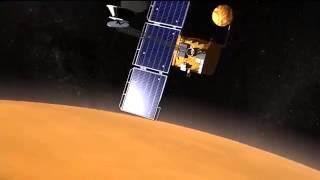
LeVar Burton On MAVEN: Star Trek Star Explains New Mars Mission | Video
Added 971 Views / 0 LikesIn a public service announcement, LaVar Burton (Geordi La Forge / Star Trek: The Next Generation) talks about the new mission that will study the Martian atmosphere.
-
02:38
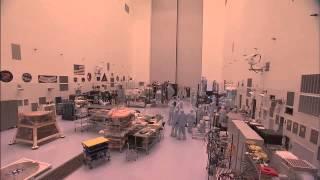
MAVEN Timelapse: Ready For Mars In Mere Minutes | Video
Added 691 Views / 0 LikesIt took NASA weeks of processing to ready the Mars Atmosphere and Volatile Evolution, or MAVEN, spacecraft for launch to the red planet, but this timelapse condenses that into less than 3 minutes.
-
03:48
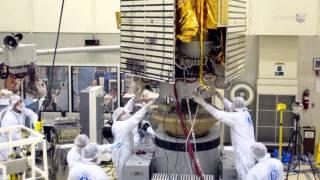
Two Comets To Fly-By Mercury, Probe To Watch | Video
Added 785 Views / 0 LikesNASA's MESSENGER spacecraft will have its eyes set on Comet's ISON and Encke as they fly-by Mercury on Nov 18 and 19th, 2013. The Mercury probe will analyze the chemical makeup of the comets and snap pictures.
-
06:12
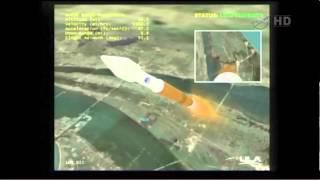
Blast-Off! MAVEN Launches To Mars | Video
Added 799 Views / 0 LikesNASA's next mission to the Red Planet is underway as an Atlas V rocket launched from Cape Canaveral Air Force Station in Florida on Nov. 18th, 2013. The rocket carried NASA's Mars Atmosphere and Volatile EvolutioN (MAVEN) spacecraft.
-
04:49
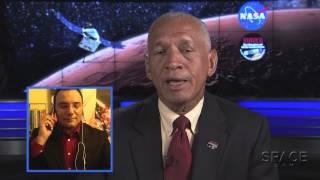
New Mars Probe 'Progression' To Manned Mission - NASA Administrator Interview
Added 756 Views / 0 LikesThe MAVEN mission to study the Red Planet's atmosphere launched on Nov. 18th, 2013, NASA administrator Charles Bolden talks to SPACE.com's @tariqjmalik about the mission and answers reader questions.
-
01:14
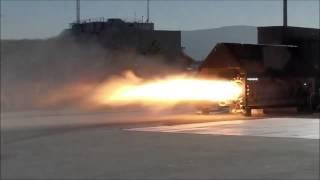
New Rocket Engine Burns Wax&Laughing Gas | Video
Added 662 Views / 0 LikesNASA's Peregrine Hybrid Sounding Rocket motor was hot-fire tested at Ames Research Center on Nov. 12, 2013. It uses paraffin-based fuel and nitrous oxide as the oxidizer for highly efficient combustion. (looped)
-
01:11
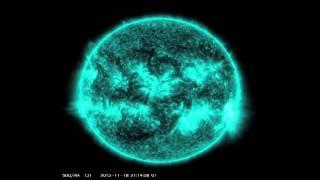
Sun's X-Ray Flare Throws Earth High Proton Flux | Video
Added 774 Views / 0 LikesOn 19 November 2013, sunspot AR1897 erupted with an X1 solar flare. A wave of ionization was recorded in the upper atmosphere over Europe, Africa and part of Asia, according to Spaceweather.com. Read more about it here: http://goo.gl/6SfaJf
-
01:11
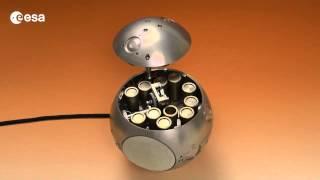
ESA Unveils Spherical Mars Sample Return Container | Video
Added 838 Views / 0 LikesThe container is engineered to carry 11 receptacles, store them under 14˚F (-10˚C), and weigh less than 11lbs (5kg). It will land on Mars with a sample providing rover. When it is filled, it will launch and rendezvous with a return-trip spacecraft.
-
03:42
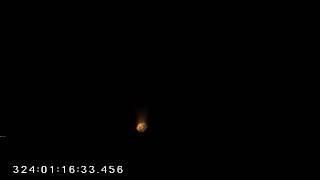
Air Force Launches Record 29 Satellites On One Rocket | Video
Added 850 Views / 0 LikesThe U.S. Air Force's Operationally Responsive Space Office's ORS-3 mission was launched from NASA Wallops in Virginia on Nov. 19, 2013. It carried the Space Test Program Satellite-3 (STPSat-3) and 28 cubesat satellites (some student built).
-
04:39
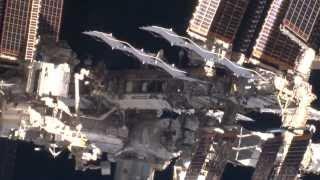
15 Years Of Space Station Science And Construction - Highlight Video
Added 802 Views / 0 LikesThe first module (Zvezda) launched in 1998 and the station was completed in 2011. To date, over 1500 science experiments, 139 flights have been made by 68 partnering countries. Read more about the anniversart here; http://goo.gl/1PZmuH
-
05:20
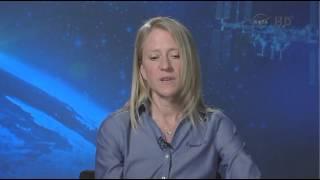
Adjusting To Life Back On Earth - Karen Nyberg Talks To SPACE.com | Video
Added 764 Views / 0 LikesThe recently returned to Earth NASA astronaut talks about adjusting to gravity and her time on the International Space Station with SPACE.com's @MiriKramer. Read more here: http://goo.gl/PzettR
-
09:59
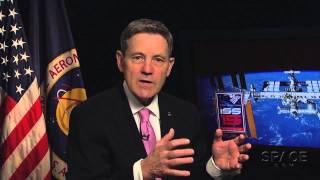
Why Is Space Station Important? NASA's Bob Cabana Explains | Video
Added 763 Views / 0 LikesThe Kennedy Space Center's Director (and former astronaut) shares his memories of building the International Space Station with SPACE.com's @MiriKramer and talks about its accomplishments.
-
02:39

How Space Station Is Helping Farmers Grow Crops | Video
Added 880 Views / 0 LikesCameras aboard the International Space Station are delivering much need information to farmers for maintaining their crops. A farmer from Minnesota explains the benefits.
-
02:03
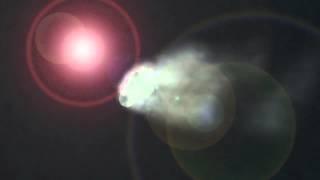
How The Sun Cooks Comets | Video
Added 695 Views / 0 LikesNASA explains how a comet goes through the process of sublimation as it nears the Sun.
-
00:56

Most Brilliant Explosion In the Universe - Gamma-Ray Burst Animation
Added 851 Views / 0 LikesWhen a massive star runs out of nuclear fuel, it collapses under its own weight and forms a black hole. The black hole shoots jets of particles through the star at nearly the speed of light and astronomers believe they create the gamma-ray bursts. Also av
-
05:45
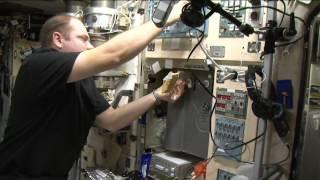
Thanksgiving in Space: Astronauts Share Their Cosmic Menu | Video
Added 839 Views / 0 LikesOn the ISS, NASA astronauts Rick Mastracchio and Mike Hopkins send down their best wishes for a happy Thanksgiving and their crewmates show off the station's galley where they will be preparing and enjoying a Thanksgiving meal.
-
01:02
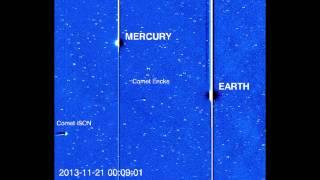
Comets ISON and Enke Enter STEREO Probe Field of View | Video
Added 805 Views / 0 LikesAs the possible 'comet of the century' (ISON) nears the Sun, it has come within the viewing range of the NASA Sun observing satellite. Earth, Mercury and the further away Comet Enke were all visible to the spacecraft on Nov. 21, 2013. (looped). All things
-
02:29
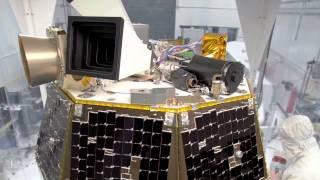
LADEE Starts Science Operations From Lunar Orbit | Video
Added 859 Views / 0 LikesLaunched September 6th, LADEE has been orbiting the Moon for weeks while diagnostics confirmed it's scientific instruments were working correctly, allowing it to begin analyzing the Moon's extremely thin exosphere.
-
02:45
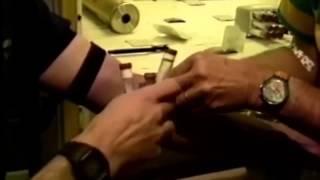
Commercial Space Program Closer To Human Transport | Video
Added 802 Views / 0 LikesWith the success of the SpaceX and Orbital Sciences spacecrafts, NASA is looking forward to sending humans to low-Earth orbit with commercial partners.
